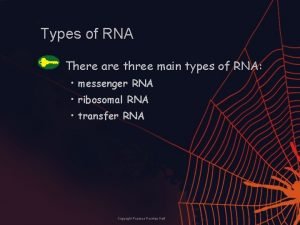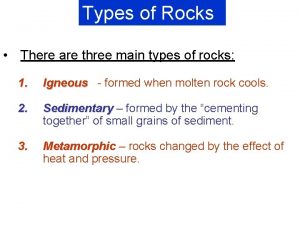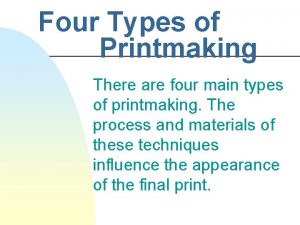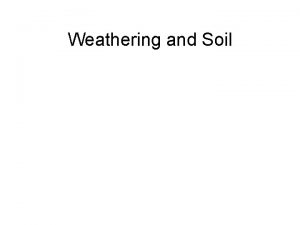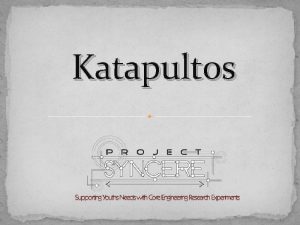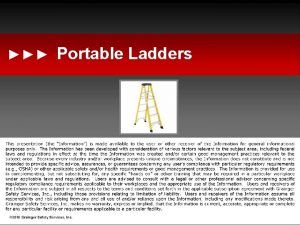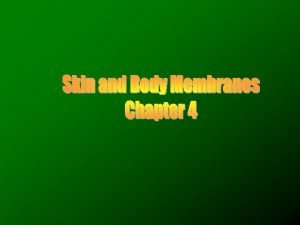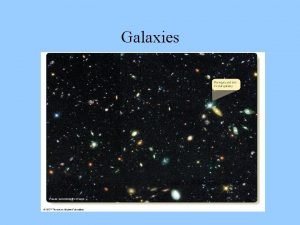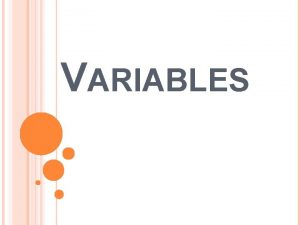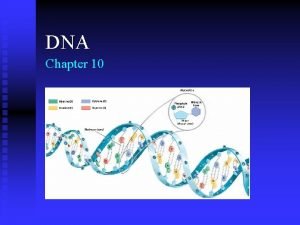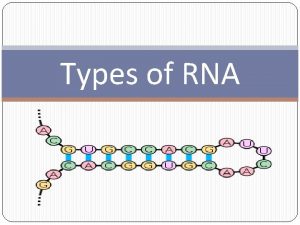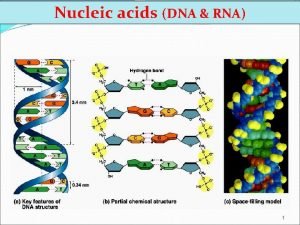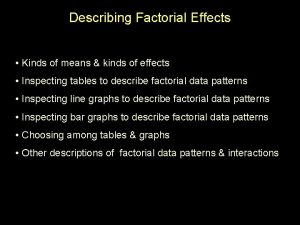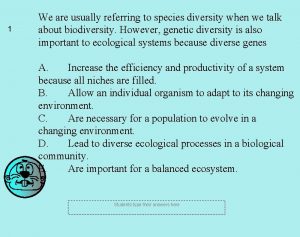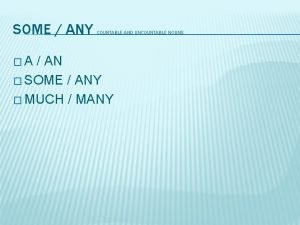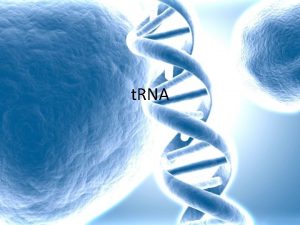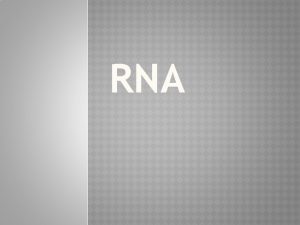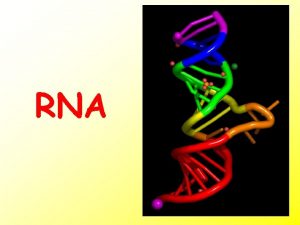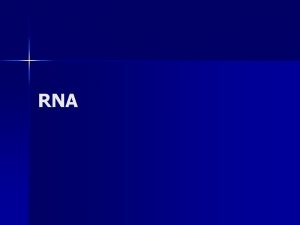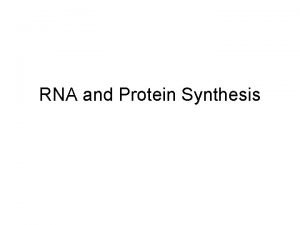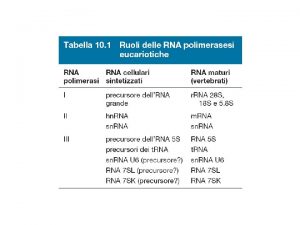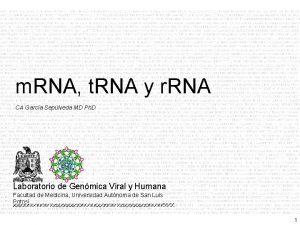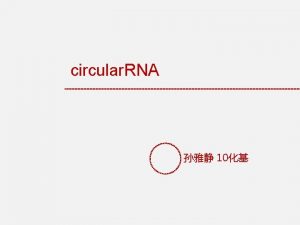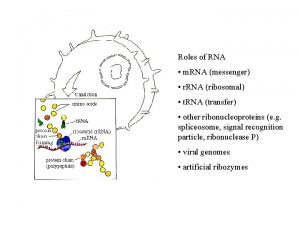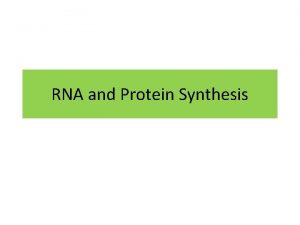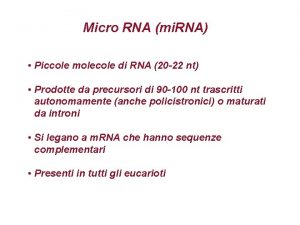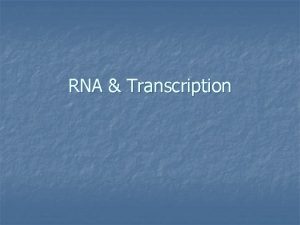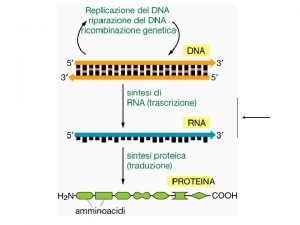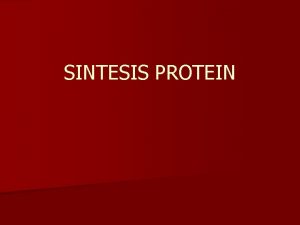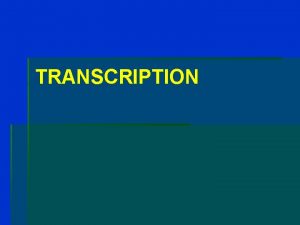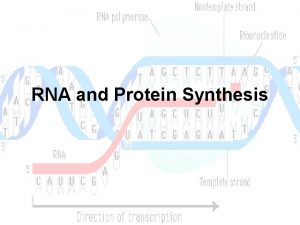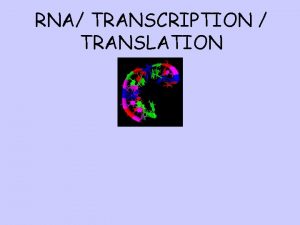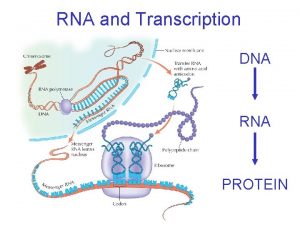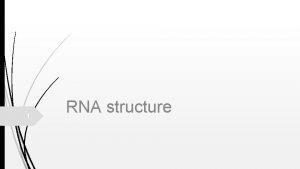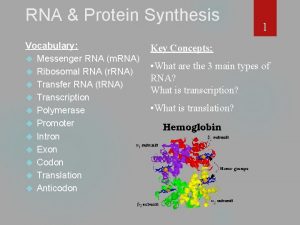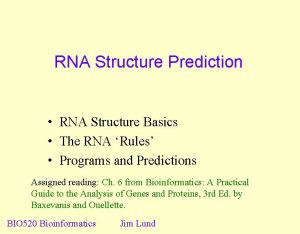Types of RNA There are three main types


































- Slides: 34

Types of RNA There are three main types of RNA: • messenger RNA • ribosomal RNA • transfer RNA Copyright Pearson Prentice Hall

Messenger RNA (m. RNA) carries copies of instructions for assembling amino acids into proteins.

Ribosomes are made up of proteins and ribosomal RNA (r. RNA).

During protein construction, transfer RNA (t. RNA) transfers each amino acid to the ribosome.

Translation The ribosome binds new t. RNA molecules and amino acids as it moves along the m. RNA. Lysine Phenylalanine t. RNA Methionine Ribosome m. RNA Start codon Copyright Pearson Prentice Hall

Mutations

What Are Mutations? • Changes in the nucleotide sequence of DNA • May occur in somatic cells (aren’t passed to offspring) • May occur in gametes (eggs & sperm) and be passed to offspring

Are Mutations Helpful or Harmful? • Mutations happen regularly • Almost all mutations are neutral • Chemicals & UV radiation cause mutations • Many mutations are repaired by enzymes

Are Mutations Helpful or Harmful? • Some type of skin cancers and leukemia result from somatic mutations • Some mutations may improve an organism’s survival (beneficial)

Types of Mutations

Chromosome Mutations • May Involve: – Changing the structure of a chromosome – The loss or gain of part of a chromosome

Chromosome Mutations • Five types exist: – Deletion – Inversion – Translocation – Nondisjunction – Duplication

Deletion • Due to breakage • A piece of a chromosome is lost

Inversion • Chromosome segment breaks off • Segment flips around backwards • Segment reattaches

Duplication • Occurs when a gene sequence is repeated

Translocation • Involves two chromosomes that aren’t homologous • Part of one chromosome is transferred to another chromosomes

Translocation

Nondisjunction • Failure of chromosomes to separate during meiosis • Causes gamete to have too many or too few chromosomes • Disorders: – Down Syndrome – three 21 st chromosomes – Turner Syndrome – single X chromosome – Klinefelter’s Syndrome – XXY chromosomes



Gene Mutations • Change in the nucleotide sequence of a gene • May only involve a single nucleotide • May be due to copying errors, chemicals, viruses, etc.

Types of Gene Mutations • Include: – Point Mutations – Substitutions – Insertions – Deletions – Frameshift

Point Mutation • Change of a single nucleotide • Includes the deletion, insertion, or substitution of ONE nucleotide in a gene

Point Mutation • Sickle Cell disease is the result of one nucleotide substitution • Occurs in the hemoglobin gene

Frameshift Mutation • Inserting or deleting one or more nucleotides • Changes the “reading frame” like changing a sentence • Proteins built incorrectly

Frameshift Mutation • Original: – The fat cat ate the wee rat. • Frame Shift (“a” added): – The fat caa tet hew eer at.

Amino Acid Sequence Changed

FYI

Normal Male 2 n = 46 29

Normal Female 2 n = 46 30

Male, Trisomy 21 (Down’s) 2 n = 47 31

Female Down’s Syndrome 2 n = 47 32

Klinefelter’s Syndrome 2 n = 47 33

Turner’s Syndrome 2 n = 45 34
 Antigentest åre
Antigentest åre What are the three main types of rna
What are the three main types of rna Types of rock quiz
Types of rock quiz 3 types of sentences
3 types of sentences What is rna's main job
What is rna's main job Lumpy cloud
Lumpy cloud Identifying cloud types
Identifying cloud types What are the four main types of printmaking?
What are the four main types of printmaking? What are the main types of chemical weathering
What are the main types of chemical weathering Types of international transactions
Types of international transactions Mangonel
Mangonel The three main types of portable ladders are
The three main types of portable ladders are Lines body cavities
Lines body cavities There are three basic types
There are three basic types Variables are of three types
Variables are of three types There are three types of
There are three types of How to start a busness
How to start a busness Rna types
Rna types Section 10-1 review discovery of dna
Section 10-1 review discovery of dna Types of rna ppt
Types of rna ppt Dna and rna
Dna and rna Future going to
Future going to Implied main idea
Implied main idea Void main int main
Void main int main How to know if there is a main effect
How to know if there is a main effect The high rate of poaching of rhinoceros is due mostly to
The high rate of poaching of rhinoceros is due mostly to Tema there is there are
Tema there is there are There is there are part of speech
There is there are part of speech There is there are negative form
There is there are negative form There is there are countable uncountable nouns
There is there are countable uncountable nouns Some any cheese
Some any cheese There is there are
There is there are Purdue owl subject verb agreement
Purdue owl subject verb agreement Demonstrativos
Demonstrativos A some any правило
A some any правило

